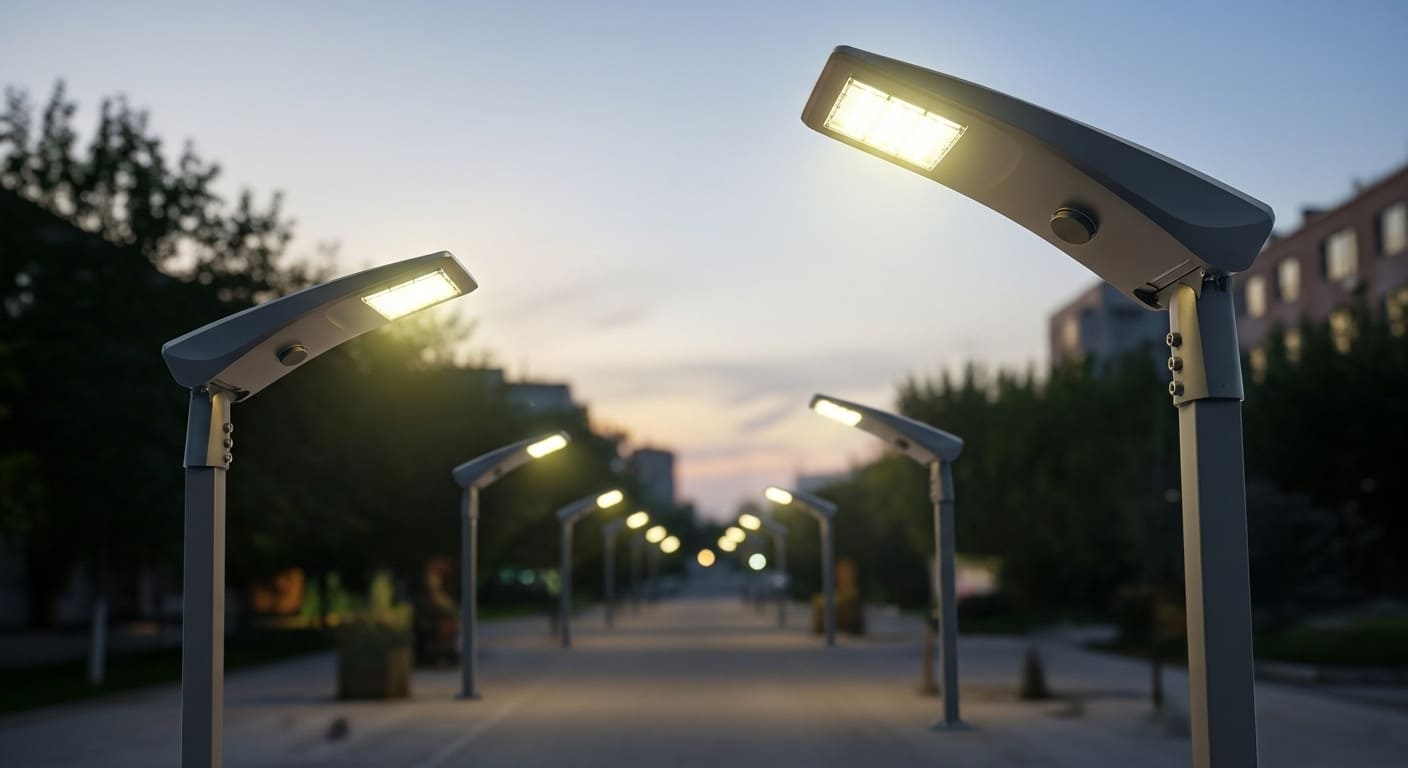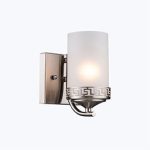Solar Street Lights: What to Know Before You Buy (Fast Guide)

Upgrading to Solar Street Lights can feel daunting until the core pieces click into place. This fast guide explains how the technology works, what specs actually matter, and how to pick the right model for each setting from residential driveways to municipal roadways and industrial yards. You’ll find practical checklists, audience‑specific tips, and FAQs crafted to rank well while staying easy to read.
Quick Takeaways (Read This First)
- Match light output to the job. Focus on lumens and optics, not just “wattage.”
- Battery chemistry matters. LiFePO₄ batteries last longer and handle daily cycling better than sealed lead‑acid.
- Controls save energy. Dusk‑to‑dawn with motion dimming can double usable autonomy.
- Weather ratings are non‑negotiable. Look for IP65+ and corrosion‑resistant housings; verify wind‑load for poles.
- Plan the layout. Pole height, spacing, and beam pattern drive uniformity and safety.
- Think lifetime cost. No trenching or utility bills often offsets higher upfront pricing.
How Solar Street Lights Work
Every system bundles five parts: solar panel, charge controller (MPPT is preferred), battery, LED fixture, and pole/arm. During the day, the panel charges the battery. At dusk, the controller powers the LEDs and manages profiles like low‑power standby with PIR/microwave motion sensors. The best units balance panel size, battery capacity, and LED efficiency so you get reliable light through cloudy stretches.
Who Are They For?
- Homeowners & Residential: Driveways, private lanes, courtyards, pathways.
- Business & Commercial Property Owners: Parking lots, perimeters, loading zones, signage.
- Public Sector & Municipalities: Streets, parks, pathways, campuses, bus stops.
- Industrial & Construction: Temporary sites, laydown yards, remote roads.
- Sports & Recreation Facilities: Community courts, trails, small fields.
- Event & Entertainment Industry: Pop‑up venues, festivals, queue areas.
- Agricultural Users: Farm roads, gates, pens, irrigation paths.
Buyer’s Checklist: 12 Questions to Ask Before You Purchase
- What lumen output do you need at ground level? (Target average and minimum, not just peak.)
- Which optic/beam suits the site Type II/III for paths and lots, Type V for open areas?
- Pole height and spacing does the photometric plan meet your uniformity goals?
- Battery chemistry & capacity LiFePO₄ with ≥2–3 autonomy days for reliability.
- Solar panel wattage relative to your latitude and shading.
- Controller type MPPT improves charge efficiency over PWM.
- Control profile dusk‑to‑dawn, adaptive dimming, motion boost, scheduling.
- Ingress protection IP65 or IP66 for dust and rain; marine‑grade coatings near coasts.
- Wind rating verify pole spec and foundation for local gusts.
- Temperature range battery performance in heat/cold and ventilation.
- Warranty & service at least 3–5 years on components; 5–10 years on LED/panel.
- Compliance dark‑sky friendly optics, local codes, and any required permits.
Sizing and Brightness: Lumens, Not Just Watts
“Wattage” describes power draw, not visible brightness. Lumens tell you how much light reaches the ground. For quick scoping:
- Residential drives & paths: ~1,500–3,000 lumens per pole at 10–12 ft (3–3.6 m).
- Small parking bays & courtyards: ~4,000–8,000 lumens at 13–16 ft (4–5 m).
- Municipal paths/parks: design to average 5–10 lux with Type II/III optics.
- Larger lots/roadways: rely on a photometric plan with IES files from the vendor.
Uniformity beats raw brightness. Glare control and correct beam shape improve comfort and safety.
Battery and Panel Choices (The Heart of Reliability)
LiFePO₄ (Lithium Iron Phosphate) batteries offer longer cycle life, better thermal stability, and deeper usable capacity than sealed lead‑acid. Choose capacity for 2–3 days of autonomy so cloudy weather doesn’t knock out your lighting.
Panels come as monocrystalline or polycrystalline. Monocrystalline typically delivers higher efficiency in a compact footprint, which matters on integrated “all‑in‑one” heads. Keep panels free from shade and tilt them appropriately for your latitude.
Smart Controls and Optics That Save Money
Dusk‑to‑dawn operation is table stakes. Add motion‑activated boost so the light runs at, say, 30–40% output when empty and jumps to 100% when movement is detected. Adaptive dimming stretches battery life without sacrificing safety.
Optics guide where photons land. Type II favors narrow paths, Type III suits lot perimeters and roads, and Type V spreads light in open squares. Ask for photometric simulations before purchasing multi‑pole projects.
Weatherability, Durability, and Safety
Outdoor fixtures take a beating. Look for IP65/IP66 seals, powder‑coated aluminum housings, and stainless fasteners. Coastal or industrial sites benefit from marine‑grade coatings. Poles should carry documented wind‑load ratings and appropriate foundations. If vandal resistance is a concern, specify robust lensing and tamper‑resistant hardware.
Installation & Permitting Basics
Solar systems cut costs by eliminating trenching and utility coordination. You still need a plan:
- Confirm underground utilities before digging foundations.
- Size the base plate, anchor bolts, and concrete per pole height and soil.
- Verify clear sky exposure for panels.
- Check HOA rules for residential installs and local permits for public right‑of‑way projects.
- For large sites, request stamped drawings and a photometric plan.
Cost, ROI, and Incentives
Prices vary by height, lumen class, battery size, and controls. A rough sense:
- Residential integrated units: often a few hundred dollars per pole.
- Commercial/municipal‑grade systems: typically higher due to larger panels, batteries, and engineered poles.
Savings come from no trenching, no utility bills, and minimal maintenance. Many regions offer solar incentives or rebates; consult local energy agencies or utility programs and compare total lifetime cost against grid‑tied alternatives.
Care & Maintenance
Solar street lights are low‑touch. Inspect panels for dust or snow buildup, wipe as needed, and verify that vents and heat sinks stay clear. Annual checks on fasteners, seals, and firmware keep systems healthy. Expect quality LiFePO₄ batteries to deliver several years of service; budget eventual replacements just as you would for any off‑grid system.
Homeowners & Residential
Choose compact all‑in‑one solar street lights with motion dimming for driveways and garden paths. A 10–12 ft pole reduces glare and focuses light where you walk.
Business & Commercial Property Owners
Prioritize photometrics and Type III optics for parking and perimeter safety. Smart profiles cut operating costs while keeping lots bright when busy.
Public Sector & Municipalities
Documentation of the autonomy days as well as vandal resistance and the ability to maintain parts. Establish a standard for models across departments in order to make it easier for spares and training.
Industrial & Construction
Temporary locations benefit by mobile bases as well as quick-deploy poles. Large batteries are ideal are ideal for night shifts and harsh conditions are typical.
Sports & Recreation Facilities
Lighting for courts and trails requires to be covered. Look into Type V optics to cover small courts. Also, check the that neighbors have glare limits.
Event & Entertainment Industry
Portable solar masts or modular heads let you adapt to changing site plans. Fast install and no generator noise help guest experience.
Agricultural Users
Look for dust‑tight housings, wide temperature ranges, and rugged mounts for gates, barns, and remote tracks.
FAQs
How bright should a solar street light be for a driveway?
Most residential driveways feel comfortable around 1,500–3,000 lumens at 10–12 ft poles with motion boost for extra visibility when someone approaches.
What battery type lasts the longest?
LiFePO₄ generally outperforms sealed lead‑acid in cycle life, depth of discharge, and temperature stability for daily charging.
Do solar street lights work in winter?
Yes, with correct sizing. Choose larger panels, adequate battery autonomy, and smart dimming to ride out short, cloudy days.
What does IP65 mean?
It indicates dust‑tight construction and protection from water jets, which is suitable for most outdoor environments.
Can I use them in coastal or industrial areas?
Absolutely, as long as you specify corrosion‑resistant finishes, sealed housings, and stainless hardware.
How far apart should poles be?
Spacing depends on pole height, optics, and target illuminance. Many paths land near 3–4× pole height for even coverage, but use a photometric plan for accuracy.
Are permits required?
Rules vary. Private property installs may be straightforward, while public right‑of‑way projects often need permits and engineered drawings.

























































































 DOUBLE RING FLUSH MOUNT
DOUBLE RING FLUSH MOUNT DOWNLIGHTS & RETROFITS
DOWNLIGHTS & RETROFITS EMERGENCY LIGHTS
EMERGENCY LIGHTS PANEL LIGHTS
PANEL LIGHTS UFO HIGH BAYS
UFO HIGH BAYS LINEAR HIGH BAYS
LINEAR HIGH BAYS LED EXHAUST FAN
LED EXHAUST FAN LIGHT BULBS
LIGHT BULBS VANITY LIGHTS
VANITY LIGHTS HAZARDOUS LIGHTING
HAZARDOUS LIGHTING TUBE LIGHTS
TUBE LIGHTS LED INTERGRATED FIXTURES
LED INTERGRATED FIXTURES INTEGRATED FIXTURES
INTEGRATED FIXTURES RETROFIT BULBS
RETROFIT BULBS CANOPY LIGHTS
CANOPY LIGHTS CORN BULBS
CORN BULBS FLOOD LIGHTS
FLOOD LIGHTS GAS PRICE SIGNS
GAS PRICE SIGNS POST TOP LIGHT
POST TOP LIGHT SHOEBOX LIGHTS
SHOEBOX LIGHTS WALL PACKS
WALL PACKS VAPOR PROOF
VAPOR PROOF LED MODULES
LED MODULES DRIVERS / POWER SUPPLY
DRIVERS / POWER SUPPLY CONTROLLERS
CONTROLLERS WIRING ACCESSORIES
WIRING ACCESSORIES